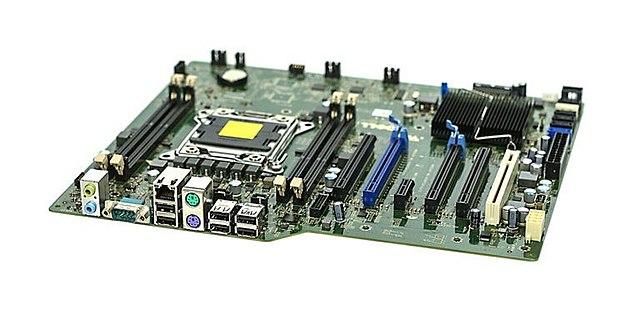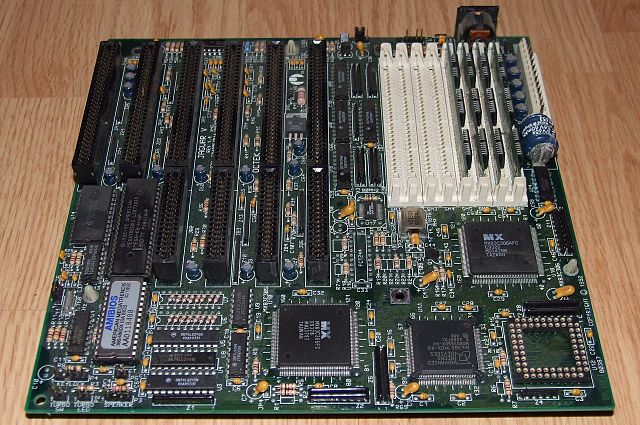Form factor is a hardware design aspect that defines and prescribes the size, shape, and other physical specifications of components, particularly in electronics. A form factor may represent a broad class of similarly sized components, or it may prescribe a specific standard. It may also define an entire system, as in a computer form factor.
Comparison of some common motherboard form factors (pen for scale)
Size comparison of various mobile form factors (from smallest to largest: Nintendo DS Lite handheld, Asus Eee PC netbook, and MacBook laptop)
A motherboard is the main printed circuit board (PCB) in general-purpose computers and other expandable systems. It holds and allows communication between many of the crucial electronic components of a system, such as the central processing unit (CPU) and memory, and provides connectors for other peripherals. Unlike a backplane, a motherboard usually contains significant sub-systems, such as the central processor, the chipset's input/output and memory controllers, interface connectors, and other components integrated for general use.
Dell Precision T3600 System Motherboard, used in professional CAD Workstations. Manufactured in 2012
Motherboard for a personal desktop computer; showing the typical components and interfaces which are found on a motherboard. This model follows the Baby AT (form factor), used in many desktop PCs.
Mainboard of a NeXTcube computer (1990) with microprocessor Motorola 68040 operated at 25 MHz and a digital signal processor Motorola 56001 at 25 MHz, which was directly accessible via a connector on the back of the casing
The Octek Jaguar V motherboard from 1993. This board has few onboard peripherals, as evidenced by the 6 slots provided for ISA cards and the lack of other built-in external interface connectors. Note the large AT keyboard connector at the back right is its only peripheral interface.






